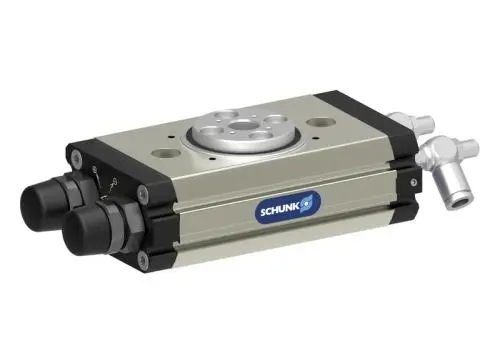Pneumatic actuators are components that use compressed air as power to drive the mechanism for linear, swing and rotational motion. As an important pneumatic actuator, the cylinder is widely used in industrial production. The piston of the single-acting cylinder only supplies air to one side. The air pressure pushes the piston to generate thrust and then returns by spring or its own weight. Double-acting airThere is air pressure on both sides of the cylinder piston to achieve forward or backward movement.
There is a problem with the cylinder. If a buffer device is not used, when the piston moves to the end, especially for a cylinder with a long stroke and a fast speed, the kinetic energy of the piston hitting the end cover will be< /span> is very large and can easily damage parts and shorten the life of the cylinder. Moreover, the noise caused by the impact is also quite terrible. If the noise of a cylinder without a buffer device is 70dB, the noise of the entire factory will be as high as 140dB, just like being on a jet runway for a long time. This has reached the limit that humans cannot bear and suffers intolerably, and therefore cannot be used for industrial production.

Buffering method of SCHUNK cylinder
The first and simplestSCHUNK Cylinder strong>Cylinder buffering method: Install a hydraulic buffer at the front end of the cylinder. Through the unique damping hole design, mineral oil is used as the medium to smoothly realize the transition from high-speed light load to low-speed heavy load. The advantage is that no adjustment is required over a wide range from small to large energies, allowing optimal energy absorption.
The second method is rubber buffering (buffer pads are provided at both ends of the piston rod). The buffering capacity of this method is fixed and small, and it is mostly used for small cylinders to prevent noise. It is necessary to pay attention to phenomena such as deformation and peeling caused by rubber aging.
The third method is air buffering (when the piston moves, the buffer sleeve and sealing ring work together to form a closed air chamber/buffer cavity on one side to achieve buffering) . BufferThe gas in the cavity can only be discharged through the buffer valve. When the opening of the buffer valve is very small, the pressure in the cavity rises rapidly, and this pressure generates a reaction force on the piston, thereby decelerating the piston until it stops. The characteristic of this method is that the buffering capacity is adjustable by adjusting the opening of the buffer valve. The smaller the opening, the greater the buffering force. Cushioning is achieved by utilizing the back pressure during cylinder movement. The cylinder back pressure is small. Buffering capacity will also be smaller. When using, attention must be paid to the control method of load rate and cylinder speed.
The use of SCHUNK cylinder lubrication
The purpose of cylinder lubrication is also to reduce the damage caused by cylinder movement to the cylinder itself and extend the service life of the cylinder. Generally, the following two methods are used. One is to lubricate the oil. Use an oilmist to mix the lubricating oil into the compressed air and deliver it to the cylinder. The second is non-oil lubrication. Only built-in grease is used, and there is no need to use an oil mist device for oil supply;it avoids damaging food and pharmaceutical packaging during the transportation process. It is contaminated by oil particles, affects the properties of some industrial chemical pigments, or affects the accuracy of detection instruments, etc. Once oil lubrication is used, it needs to be used continuously. Once it is stopped, its lifespan will drop sharply. Therefore cylinderManufacturers mostly use non-oil lubrication.






 WhatsApp: +8615857777578
WhatsApp: +8615857777578